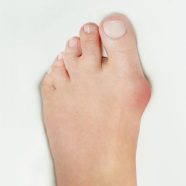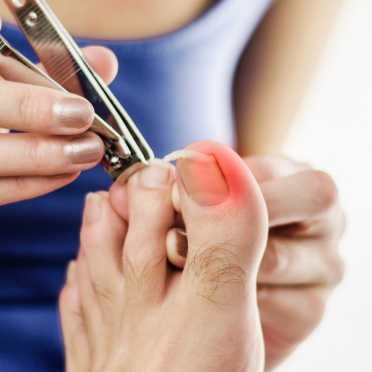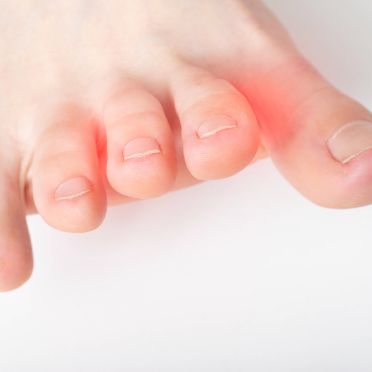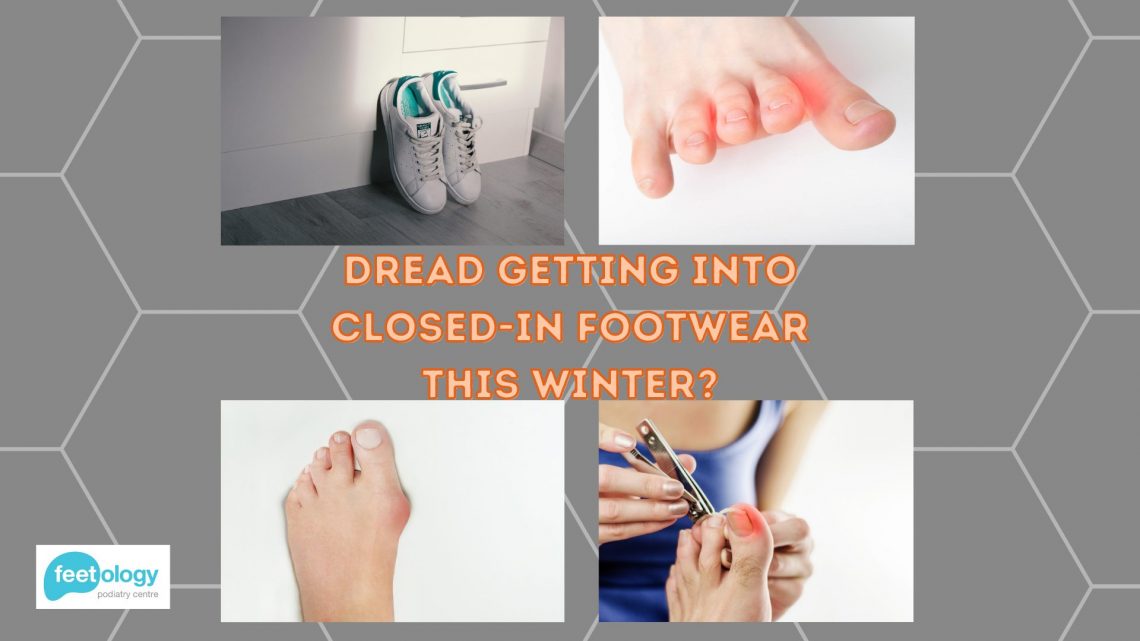Three of the most common causes of footwear pain in winter include bunions, ingrown toenails and Morton's Neuromas
Do you sometimes experience pain in the front part of your feet when you put your shoes on? It could be caused by conditions like bunions, ingrown toenails, or Morton's Neuromas. Closed-in shoes, which are commonly worn, can make these conditions worse and cause discomfort. As a Podiatrist, I want to help you understand and manage these foot problems, especially when wearing closed-in shoes.
Understanding the Conditions
 Bunions: Bunions are bony bumps that form at the base of the big toe. Closed-in shoes that are too tight can squeeze the toes and make bunions hurt more. Symptoms include pain, swelling, redness, and trouble finding comfortable shoes. Some bunions can even be painful without shoes as well.
Bunions: Bunions are bony bumps that form at the base of the big toe. Closed-in shoes that are too tight can squeeze the toes and make bunions hurt more. Symptoms include pain, swelling, redness, and trouble finding comfortable shoes. Some bunions can even be painful without shoes as well.  Ingrown Toenails: Ingrown toenails happen when the edge of a toenail grows into the skin. Closed shoes that squeeze the toes can make this problem worse. Ingrown toenails cause pain, redness, swelling, and sometimes even infection. Walking can be painful with ingrown toenails.
Ingrown Toenails: Ingrown toenails happen when the edge of a toenail grows into the skin. Closed shoes that squeeze the toes can make this problem worse. Ingrown toenails cause pain, redness, swelling, and sometimes even infection. Walking can be painful with ingrown toenails. Morton's Neuromas: Morton's Neuromas are lumps that grow between the toes. They often occur between the third and fourth toes. Closed shoes that squeeze the toes together can put pressure on the nerves and cause sharp, burning pain, tingling, or numbness in the front part of the foot.
Morton's Neuromas: Morton's Neuromas are lumps that grow between the toes. They often occur between the third and fourth toes. Closed shoes that squeeze the toes together can put pressure on the nerves and cause sharp, burning pain, tingling, or numbness in the front part of the foot.
Managing Foot Pain in Closed-In Shoes
- 1. Choose the Right Shoes: Pick closed-in shoes with enough space for your toes. Look for shoes that have a wide toe box, allowing your toes to move comfortably. Soft and flexible materials that do not compress the forefoot are best. Ask us for special shoes or shoe inserts if needed.
- 2. Find the Right Fit: Make sure your shoes fit well and don't squeeze your feet. Avoid shoes that are too tight or narrow.
- 3. Protect Your Feet: Use padding or cushions to relieve pressure and add extra comfort. For bunions, special pads or splints can protect them from rubbing against your shoes. Metatarsal pads or shoe inserts can help reduce pressure on Morton's Neuromas.
- 4. Take Care of Your Nails: Proper nail care is important, especially for ingrown toenails. Cut your nails straight across and not too short. If you have trouble cutting your nails or get ingrown toenails often,be sure to make an appointment with us to help you out.
- 5. Custom Orthotics and Treatments: Consult with us to discuss custom orthotics or treatments tailored to your specific condition. Orthotics can help redistribute pressure and correct foot alignment to ease bunions and Morton's Neuromas. Exercises and Shockwave may help as well.
Taking care of your feet is essential for happy and pain-free steps!
If these tips aren't helping your issue, get in touch with Feetology Podiatry Centre straight away. To make an appointment, simply call 3820 6326 or book online at www.feetology.com.au
